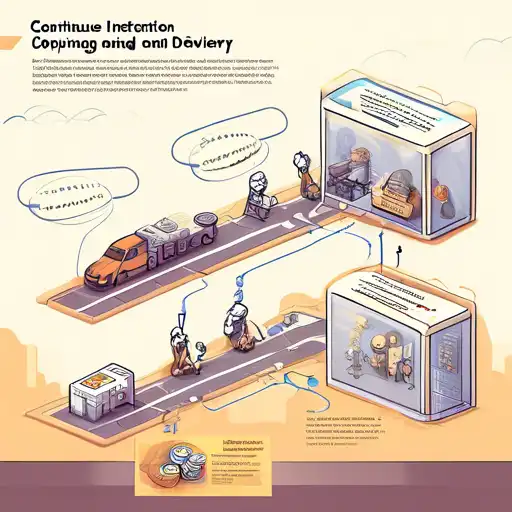What is Continuous Integration and Delivery?
Continuous Integration (CI) and Continuous Delivery (CD) are pivotal practices in the modern software development lifecycle, aimed at improving software quality and speeding up the release process. CI/CD automates the integration of code changes from multiple contributors into a single software project, ensuring that the software can be reliably released at any time.
The Benefits of CI/CD
Adopting CI/CD brings numerous benefits to development teams, including:
- Reduced integration problems
- Faster release cycles
- Higher quality software
- Improved team productivity
By integrating regularly, teams can detect errors quickly, and by automating the delivery process, they can ensure that software is always in a release-ready state.
How CI/CD Works
CI/CD pipelines are the backbone of these practices. A typical pipeline includes the following stages:
- Code commit
- Automated builds
- Automated testing
- Deployment
Each stage is automated, reducing manual errors and speeding up the process. Tools like Jenkins, Travis CI, and GitLab CI/CD are commonly used to implement these pipelines.
Best Practices for Implementing CI/CD
To maximize the benefits of CI/CD, teams should adhere to the following best practices:
- Maintain a single source repository
- Automate the build
- Make the build self-testing
- Keep the build fast
- Test in a clone of the production environment
- Make it easy to get the latest deliverables
- Ensure everyone can see what's happening
Following these practices ensures that the CI/CD pipeline is efficient and effective.
Challenges in CI/CD Adoption
While CI/CD offers many advantages, teams may face challenges during adoption, such as:
- Resistance to change
- Integration with legacy systems
- High initial setup cost
Overcoming these challenges requires careful planning, training, and sometimes, cultural shifts within the organization.
Conclusion
Continuous Integration and Delivery are essential practices for any team looking to improve their software development process. By automating the integration and delivery processes, teams can achieve faster release cycles, higher quality software, and improved productivity. Despite the challenges, the benefits of CI/CD make it a worthwhile investment for any software development team.
For more insights into optimizing your development process, explore our guide on Agile Methodologies and how they complement CI/CD practices.
